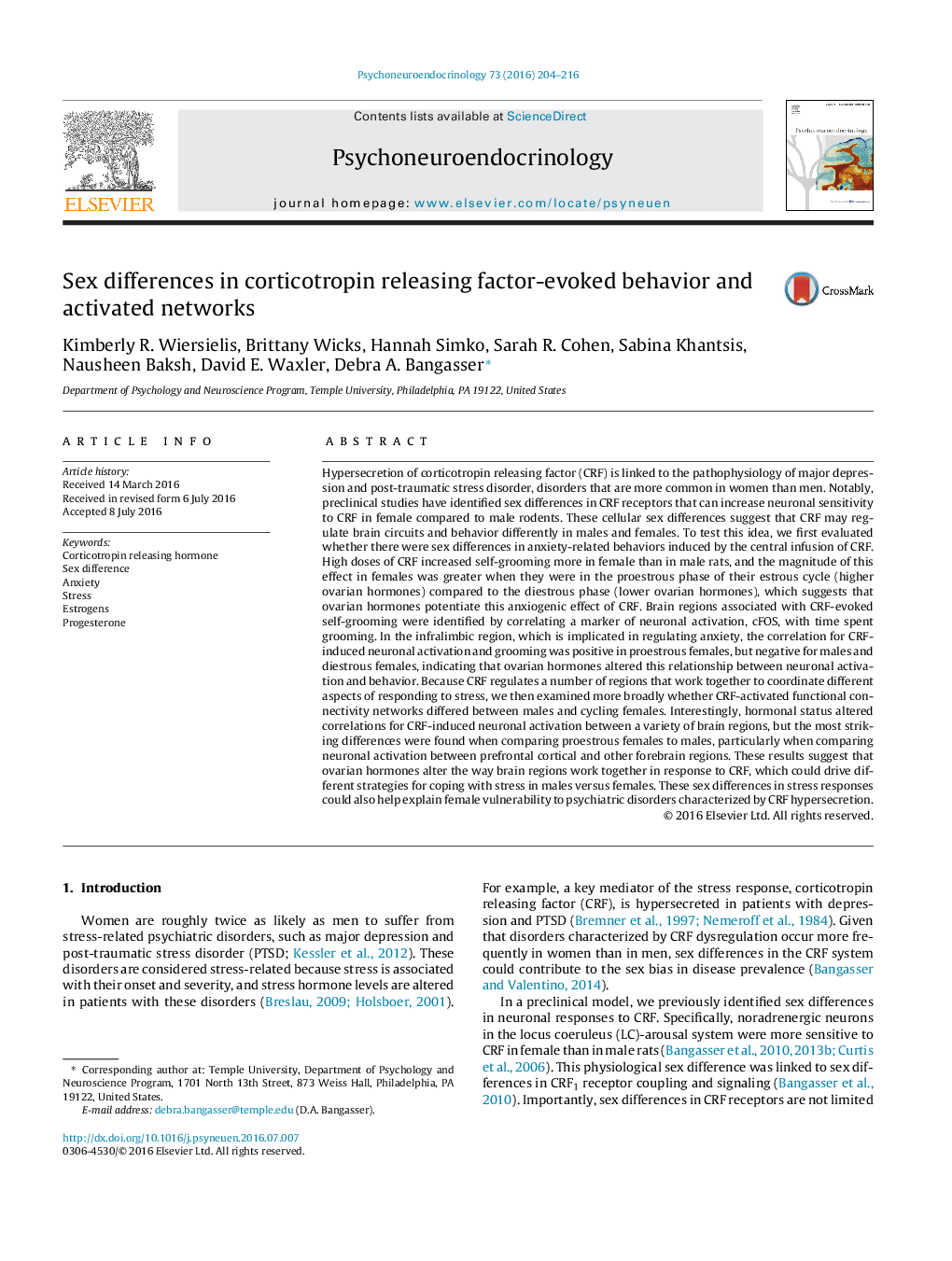| کد مقاله | کد نشریه | سال انتشار | مقاله انگلیسی | نسخه تمام متن |
|---|---|---|---|---|
| 6817971 | 547064 | 2016 | 13 صفحه PDF | دانلود رایگان |
عنوان انگلیسی مقاله ISI
Sex differences in corticotropin releasing factor-evoked behavior and activated networks
ترجمه فارسی عنوان
اختلالات جنسی در رفتارهای ناشی از تخریب کورتیکوتروپین و شبکه های فعال شده
دانلود مقاله + سفارش ترجمه
دانلود مقاله ISI انگلیسی
رایگان برای ایرانیان
کلمات کلیدی
هورمون آزاد کننده کورتیکوتروپین، تفاوت جنسی، اضطراب، فشار، استروژن، پروژسترون،
موضوعات مرتبط
علوم زیستی و بیوفناوری
بیوشیمی، ژنتیک و زیست شناسی مولکولی
علوم غدد
چکیده انگلیسی
Hypersecretion of corticotropin releasing factor (CRF) is linked to the pathophysiology of major depression and post-traumatic stress disorder, disorders that are more common in women than men. Notably, preclinical studies have identified sex differences in CRF receptors that can increase neuronal sensitivity to CRF in female compared to male rodents. These cellular sex differences suggest that CRF may regulate brain circuits and behavior differently in males and females. To test this idea, we first evaluated whether there were sex differences in anxiety-related behaviors induced by the central infusion of CRF. High doses of CRF increased self-grooming more in female than in male rats, and the magnitude of this effect in females was greater when they were in the proestrous phase of their estrous cycle (higher ovarian hormones) compared to the diestrous phase (lower ovarian hormones), which suggests that ovarian hormones potentiate this anxiogenic effect of CRF. Brain regions associated with CRF-evoked self-grooming were identified by correlating a marker of neuronal activation, cFOS, with time spent grooming. In the infralimbic region, which is implicated in regulating anxiety, the correlation for CRF-induced neuronal activation and grooming was positive in proestrous females, but negative for males and diestrous females, indicating that ovarian hormones altered this relationship between neuronal activation and behavior. Because CRF regulates a number of regions that work together to coordinate different aspects of responding to stress, we then examined more broadly whether CRF-activated functional connectivity networks differed between males and cycling females. Interestingly, hormonal status altered correlations for CRF-induced neuronal activation between a variety of brain regions, but the most striking differences were found when comparing proestrous females to males, particularly when comparing neuronal activation between prefrontal cortical and other forebrain regions. These results suggest that ovarian hormones alter the way brain regions work together in response to CRF, which could drive different strategies for coping with stress in males versus females. These sex differences in stress responses could also help explain female vulnerability to psychiatric disorders characterized by CRF hypersecretion.
ناشر
Database: Elsevier - ScienceDirect (ساینس دایرکت)
Journal: Psychoneuroendocrinology - Volume 73, November 2016, Pages 204-216
Journal: Psychoneuroendocrinology - Volume 73, November 2016, Pages 204-216
نویسندگان
Kimberly R. Wiersielis, Brittany Wicks, Hannah Simko, Sarah R. Cohen, Sabina Khantsis, Nausheen Baksh, David E. Waxler, Debra A. Bangasser,
